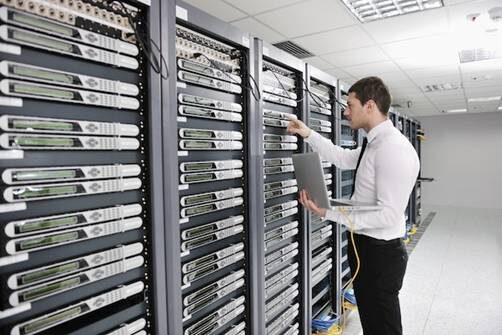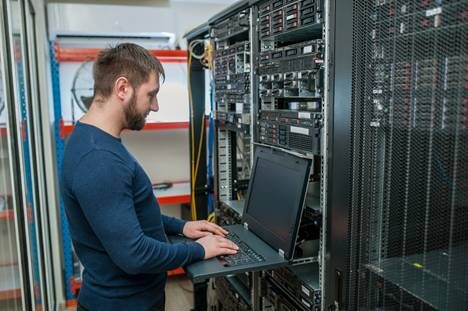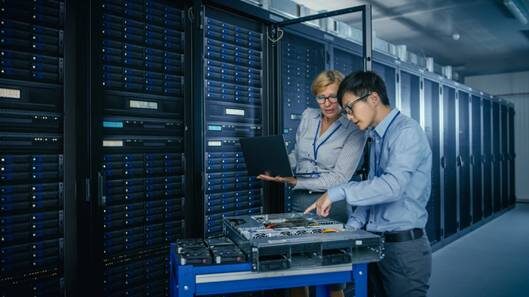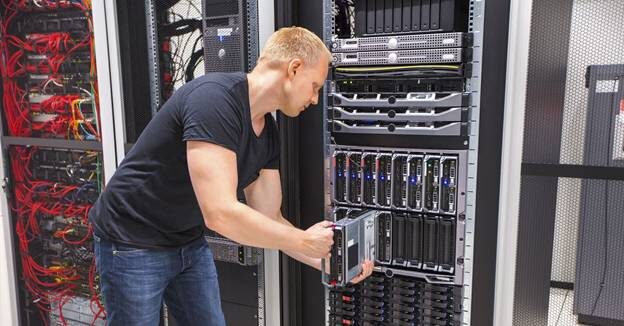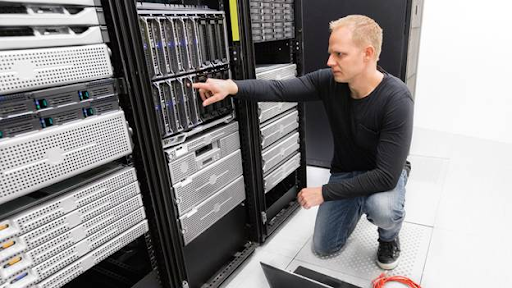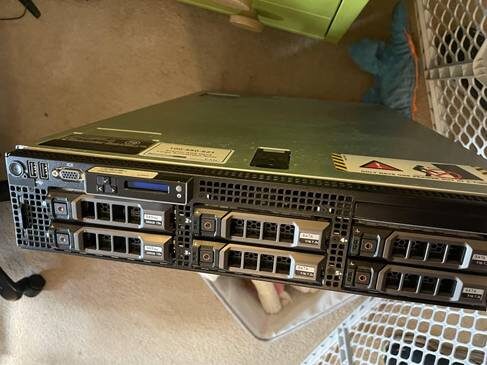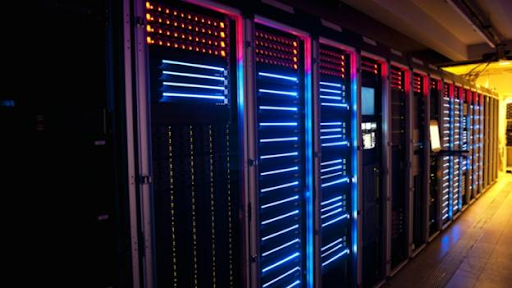Byline: An Expert Breakdown by Evgeny Zorin, Owner of Chicago’s EZ PC Solutions Inc.
For many small and medium-sized business (SMB) owners, the word “server” conjures images of a cavernous, refrigerated room filled with blinking lights – an expensive and complex piece of technology reserved for large corporations. In reality, a server is simply a powerful, reliable computer designed to be the central nervous system of your business operations. It’s the engine that runs your shared files, hosts your critical applications, manages your website, and secures your precious data.
Choosing the right server is one of the most critical IT decisions a growing business can make. The wrong choice can lead to frustrating slowdowns, security vulnerabilities, and costly downtime. Conversely, overspending on a system you don’t need can drain your budget without providing any real benefit.
So how do you find that perfect balance of performance, reliability, and cost? To cut through the technical jargon, we consulted Evgeny Zorin, the founder of EZ PC Solutions Inc., a Chicago-based company that specializes in building custom servers and high-performance computers for both business and gaming. With years of experience guiding businesses through this process, Evgeny believes that choosing a server should be a strategic decision, not an intimidating one.
“Business owners don’t need to become IT experts to make a smart choice,” says Evgeny. “But they do need to understand their own needs. The goal is to invest in a solution that not only solves today’s problems but also has the capacity to grow with your business. It’s about finding the right tool for the job.”
Here is Evgeny’s comprehensive, step-by-step guide to help you select the perfect server for your business.
Step 1: Define the Mission. What Will Your Server Do?
Before you even look at a single piece of hardware, you need a clear answer to this question. A server is not a one-size-fits-all solution. Its configuration will depend entirely on its primary roles. Common server tasks for an SMB include:
- File & Print Server: The most basic and common use. This server provides a centralized location to store, share, and back up company files, and it manages shared office printers.
- Application Server: This server runs specific business-critical software, such as accounting software (like QuickBooks Enterprise), Customer Relationship Management (CRM) systems, or industry-specific applications. The software provider will usually have specific hardware requirements.
- Web Server: If you host your own company website, intranet, or e-commerce platform, you’ll need a server optimized for handling web traffic and database queries.
- Email Server: While many businesses use cloud-based email like Google Workspace or Microsoft 365, some prefer the control and security of hosting their own email server (e.g., Microsoft Exchange).
- Virtualization Server: This is a more advanced but incredibly efficient approach. A single, powerful physical server can run multiple “virtual” servers, allowing you to consolidate tasks. For example, one physical machine could host a virtual file server, a virtual application server, and a virtual test environment, all at the same time.
“Be realistic about your needs,” Evgeny advises. “Make a list of all the functions you want the server to perform, both now and in the next 2-3 years. This list will be the blueprint for your hardware configuration.”
Step 2: Choose the Right Form Factor (The Server’s Shape)
Servers primarily come in three physical shapes, or “form factors.” The right one for you depends on your physical office space and future expansion plans.
- Tower Server: This looks like a standard desktop PC tower.
- Pros: It’s quiet, self-contained, and doesn’t require any special mounting hardware. It’s the perfect choice for small offices with no dedicated IT closet.
- Cons: It takes up floor or desk space. Scaling up means adding more individual towers, which can become unwieldy.
- Rack Server: This is a flat, wide server designed to be mounted in a standardized server rack.
- Pros: Highly scalable and space-efficient. You can stack multiple servers, networking switches, and backup devices neatly in a single cabinet. This is the professional standard for growing businesses.
- Cons: It requires you to invest in a server rack. Rack servers are also generally louder and require a well-ventilated space, like an IT closet or dedicated server room.
- Blade Server: These are ultra-compact servers designed to slide into a specialized chassis that provides power, cooling, and networking for all the blades.
- Pros: The most space-dense and energy-efficient option, ideal for data centers or businesses running dozens of applications.
- Cons: High initial cost for the chassis. This is typically overkill for most SMBs.
“For most small businesses starting out, a tower server is the simplest entry point,” says Evgeny. “But if you anticipate significant growth or need to run multiple servers, investing in a rack-based system from the start is a much more scalable and organized long-term strategy.”
Step 3: Understand the Core Components (The Guts of the Machine)
Once you know the server’s mission and form factor, it’s time to look at the internal hardware.
- Processor (CPU): This is the brain of the server. The choice depends on the workload. For a basic file server, a single quad-core processor is often sufficient. For a demanding application or virtualization server, you’ll want a server with one or two powerful processors with many cores (e.g., Intel Xeon or AMD EPYC series).
- Memory (RAM): RAM is critical for performance, especially if multiple users are accessing the server simultaneously or if you’re running virtual machines. Don’t skimp here. 16-32GB is a good starting point for a basic server, while application or virtualization servers will often require 64GB, 128GB, or more. Always choose Error-Correcting Code (ECC) RAM, which is a special type of memory for servers that prevents data corruption.
- Storage (Hard Drives/SSDs): This is where your data lives. You have two main choices:
- Hard Disk Drives (HDDs): Slower but offer massive capacity for a low cost. Ideal for storing large files, archives, and backups.
- Solid-State Drives (SSDs): Significantly faster than HDDs. Using SSDs for the operating system and critical applications will make your server feel incredibly responsive.
“The best solution is often a hybrid approach,” suggests Evgeny. “Use fast SSDs for the OS and applications, and use large, less-expensive HDDs for bulk file storage. It gives you the best of both worlds.”
- RAID (Redundant Array of Independent Disks): This is a non-negotiable for any business server. RAID is a technology that uses multiple drives to protect your data. If one drive fails, the server continues to run without interruption, and you can replace the failed drive without losing any data. Your data is your most valuable asset; RAID is your insurance policy.
Step 4: New vs. Refurbished: The Smart Money Decision
A brand-new server from a major manufacturer can be expensive. For many SMBs, a high-quality, professionally refurbished server offers incredible value.
“This is one of the biggest areas where businesses can save money without sacrificing performance or reliability,” Evgeny states. “But you have to buy from a reputable vendor. A professional refurbisher like EZ PC Solutions doesn’t just wipe the drives and resell the machine. We conduct full diagnostics, stress-test every component, update all firmware, replace any parts that don’t meet our standards, and provide a comprehensive warranty. It’s enterprise-grade hardware at a fraction of the cost.”
When considering refurbished, ask the vendor about their testing process, warranty terms, and support options. A trustworthy supplier will be transparent about their entire process.
Conclusion: Your Server is an Investment, Not an Expense
Choosing a server may seem daunting, but it boils down to a clear understanding of your business needs. By defining its role, selecting the right form factor, and investing in the right components, you are building a reliable foundation for your company’s growth.
“Don’t get paralyzed by the options,” Evgeny concludes. “Talk to an expert. A good provider will listen to your needs and your budget and configure a solution that is tailored to you. Your server isn’t just a piece of hardware; it’s an investment in your business’s efficiency, security, and future. Make that investment wisely.”
About the Author: Evgeny Zorin is the owner of EZ PC Solutions Inc., a Chicago-based company dedicated to building and supplying high-performance custom computers and servers. With a deep expertise in both gaming and enterprise hardware, Evgeny helps businesses and individuals find powerful, reliable IT solutions that deliver maximum value.

